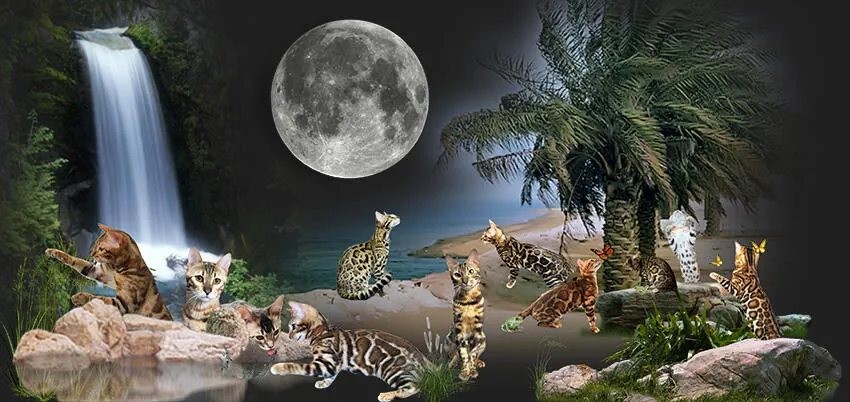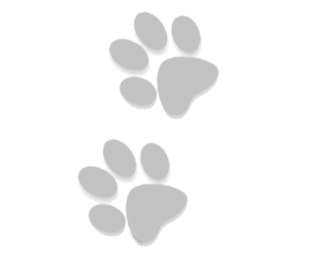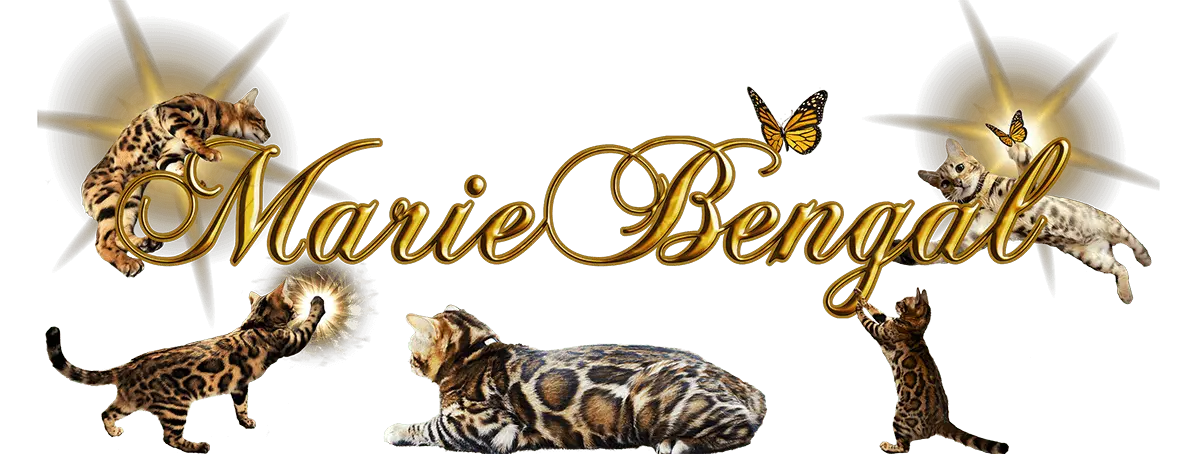What is a Bengal Cat ?
The Bengal: A Mix of a Leopard and a Cat

Small luxury leopard...
The Bengal cat is a very unique breed and has nothing to do with normal cats. When you take all the intriguing qualities of the wildcat, the characteristic, the look, the movement and the high intelligence then you add the gentle and loving nature of a normal house cat you have the Bengal cat. Jean Mill dreamed this for a long time, and now she achieves it with such success.
History of the Bengal Cat
The Bengal cat is the result of various crosses made by a California breeder, Mrs. Jean Mill who dreamed of creating a domestic cat with all the physical characteristics of a genuine feline Bengalensis and the moral qualities of a standard kitten. After various cross conducted in 1963 from domestic cats and leopards males in Asia which gives today's the amazing dress designs of the Bengal.
Look of the Bengal Cat
The Bengal cat, during his childhood, his dress is undergoing a period of "fuzzy" it’s the same as camouflage for wild leopards in nature. The Bengal kitten is covered with long grey/black hair so it’s really hard to know the exact colour this Bengal cat will have later on as he matures. The fuzzy stages can last until 7 months of age.
Here are a few examples of Bengal kittens in fuzzy stages before their colour appear.
The dress of a Bengal kittren is slow to develop can take up to two years to become final. There are several kinds of models: the spots, marbled and rosettes (bicolour task is open or closed). The rosettes (task clear inside a circle darker) are the most sought. The Bengal is the only breed of cat to have rosettes, other breeds like Savannah cat or standard domestic tabby cats can have spots but no other breed have real rosettes. The fur of the Bengal is exceptionally soft, silky and velvet to the touch. Under the light Bengals appears covered with a thin layer of gold dust and touching, it feels like touching glass.
Temperament of Bengal Cats
Me the Bengal Cat : Because of my wild ancestor, I inherited the love of the water, in fact, I’m totally fascinated by it so don’t be surprised if I just follow you in the shower or bath. I’m curious, likes to climb and perch myself very high, I have my very active period "Power Trip" to spend my full of energy. I’m very sociable, affectionate and loves the company of other animals. I’m a little exotic leopard without having its aggressive nature. I love to communicate with people, when you hear me you’ll see by yourself that I’m not an ordinary cat because my voice doesn’t sound like a cat. I endowed with great intelligence, with a little practice you can teach me several things like a little dog. If you work a lot and have no time for me, I may not be a good cat for you, or you can buy me a sister, brother or any other animal to play with. I was lucky to be born in a good cattery who let me live in total liberty with the family which help me to socialize with adults, children and dogs, these are the reason why I can and want to live with the person or family who want to adopt me.


FAQ | All about the Bengal cat
Bengal cat information
The Bengal cat breed is still very little known in Canada, we have collected several questions that we regularly get asked, with our answers to the best of our knowledge.

Bengal Cat Breed Standard

Description of the bengal breed
The Bengal cat is an athletic, curious, confident and friendly cat. Mix of power and agility, the Bengal cat coat and head are the most attractive aspect of this breed. The Bengal is never to be mean and show aggressivity.
Body of the Bengal cat
The body is Long and substantial, not oriental or foreign. Medium to large (but not quite as large as the largest domestic breed).
Legs: Medium length, slightly longer in the back than in the front feet, large, round, with prominent knuckles.
Tail: Medium length, thick, tapered at the end with rounded tip.
Boning: Sturdy, firm; never delicate.
Musculature: Very muscular, especially in the males, one of the most distinguishing features.
Head of the Bengal cat
Broad modified wedges with rounded contours. Longer than it is wide. Slightly small in proportion to the body, but not to be taken to the extreme. The skull behind the ears makes a gentle curve and flows into the neck. Allowance to be made for jowls in adult males. The overall look of the head should be as distinct from the domestic cat as possible.
Ears: medium to small, relatively short, with wide base and rounded tops. Set as much on the side as the top of the head, following the contour of the face in the frontal view, and pointing forward in the profile view. Light horizontal furnishings acceptable, but lynx tipping undesirable.
Eyes: should be oval, almost round. Large, but not bugged. Set wide apart, back into the face, and on slight bias toward the base of the ear. Eye colour independent of coat colour except in the lynx points. The more richness and depth of colour, the better.
Chin: Bengal Cat should have Strong chin, aligns with tip of the nose in profile.
Muzzle: Full and broad, with large, prominent whisker pads and pronounced, high cheekbones. Slight muzzle break at the whisker pads.
Nose: Large and wide; slightly puffed nose leather. Profile: Curve of the forehead should flow into the bridge of the nose with no break. The bridge of the nose extends above the eyes; the line of the bridge extends to the nose tip, making a very slight, to nearly straight, concave curve.
Neck: Long, substantial, muscular; in proportion to the head and body.
Pattern of the Bengal cats
Short to medium. Allowance for slightly longer coat of kittens. Dense and luxurious, close-lying, unusually soft and silky to the touch.
Colour & Pattern :
Spotted: Spots shall be random, or aligned horizontally. Rosettes showing two distinct colours or shades, such as paw print shaped, arrowheads shaped, doughnuts or half-doughnut shaped or clustered are preferred to single spotting but not required. Contrast with ground colour must be extreme, giving distinct pattern and sharp edges. Strong, bold chin strap and mascara markings desirable. Virtually white undersides and belly desirable. blotchy horizontal shoulder streaks spotted legs and spotted or rosetted tail are desirable. Belly must be spotted.
Marbled Bengals :
Here you can learn more about the Marbled Bengal Cat.
More about the Bengal breed
The goal of the Bengal cat breeding program is to create a domestic cat which has physical features distinctive to the small forest-dwelling wildcats, and with the loving, dependable temperament of the domestic cat. Keeping this goal in mind, judges shall give special merit to those characteristics in the appearance of the Bengal which are distinct from those found in other domestic cat breeds. A Bengal cat is an athletic animal, alert to its surroundings; a friendly, curious, confident cat with strength, agility, balance and grace. It is a medium to large cat which exhibits a very muscular and solid build. Its wide nose with prominent whisker pads and large oval, almost round eyes in a slightly small head enhance the wild appearance and expressive nocturnal look. Its very slight, to nearly straight, concave profile and relatively short ears with wide base and rounded tops add to the Bengal cat distinctive and unique appearance. The short, dense coat has a uniquely soft.
Bengal cat, an ongoing evolution
Today Bengal cat breeders are working hard to make the Bengal cat to the next level, trying to have a white tummy, big-sized jet black outline tricolour rosettes with awesome contrast, no barring, spotted on 4 legs, rosettes tail, Wild head and more!

If you wish to learn more about the Bengal cat and all cats in general, including diseases, declawing and tons of more information, please visit out cat information page.


